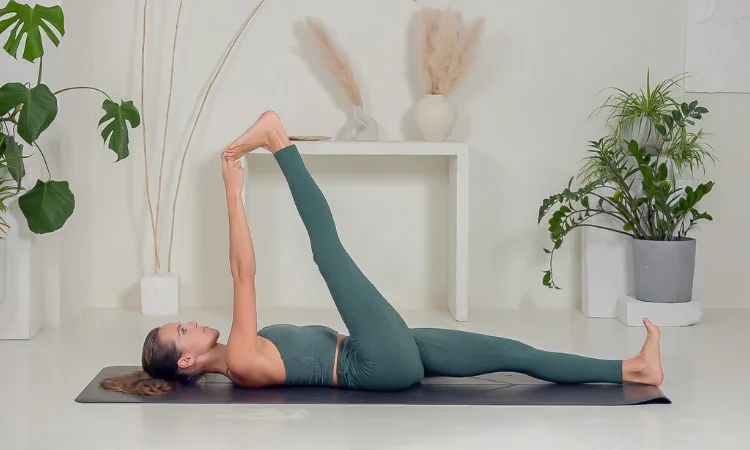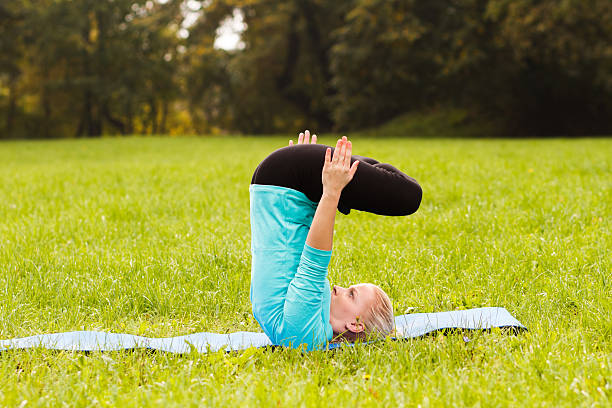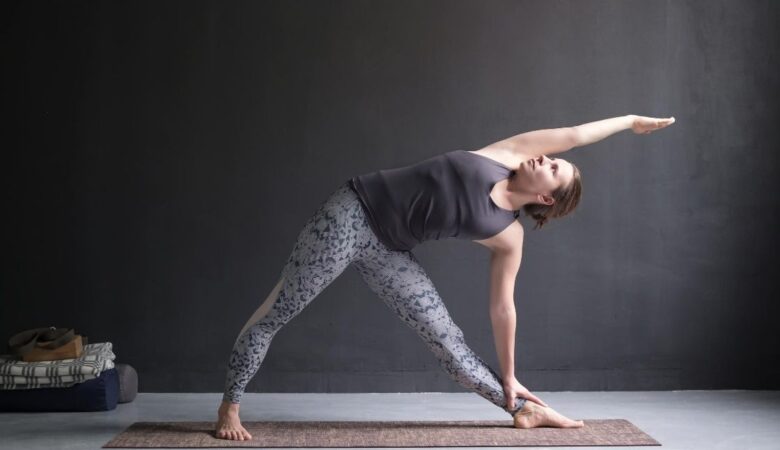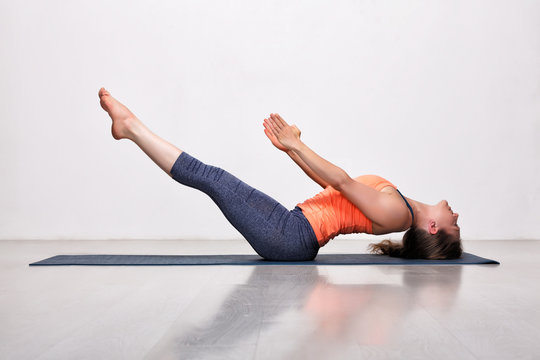Uttanasana, also known as Standing Forward Bend, is a fundamental yoga posture that combines flexibility, surrender, and mindfulness. Derived from the Sanskrit words “Ut” (intense), “Tan” (to stretch), and “Asana” (pose), Standing Forward Bend means an “intense stretch pose.” It is commonly practiced in Hatha, Vinyasa, and Ashtanga yoga and is a key part of the Sun Salutation sequence.
Table of Contents
Meaning and Origin:
At first glance, Standing Forward Bend may seem like a simple forward fold, but it offers much more than a physical stretch. It gently elongates the entire backside of the body from the calves and hamstrings to the spine while calming the nervous system and encouraging introspection. This pose invites practitioners to turn inward, release tension, and cultivate a sense of peace and grounding.
Whether used as a warm-up, transition, or cool-down, Standing Forward Bend helps unlock stiffness, improve circulation, and balance the flow of energy throughout the body and mind.
The term “Uttanasana” is derived from the Sanskrit:
-
“Ut” = intense
-
“Tan” = to stretch or extend
-
“Asana” = posture
Thus, Uttanasana means an intense stretch pose or deep forward bend. It is a foundational posture in many styles of yoga and commonly practiced as part of the Sun Salutation (Surya Namaskar) sequence.
How to Practice Uttanasana Step-by-Step Guide:
See below the steps to practice Standing Forward Bend…
Step 1:
Stand tall in Tadasana with your feet hip-width apart and arms at your sides.
Step 2:
Inhale deeply, raise your arms overhead, and lengthen your spine.
Step 3:
Exhale slowly, bend forward from the hips (not the waist), and bring your chest toward your thighs.
Step 4:
Keep your knees slightly bent if your hamstrings are tight.
Step 5:
Let your head hang, and place your palms or fingertips on the floor beside your feet or hold your ankles.
Step 6:
Stay for 5-10 breaths, allowing the spine to lengthen with each exhale.
Step 7:
To come out, inhale, press into your feet, and gently roll up to standing, stacking the spine vertebra by vertebra.
Modifications and Variations:
- For beginners: Bend the knees to avoid strain on the hamstrings or lower back.
- With props: Use yoga blocks under your hands if they don’t reach the floor.
- Ardha Uttanasana (Halfway Lift): Place hands on shins or blocks, keep spine parallel to the floor.
- Paschima Namaskarasana Variation: Bring hands into reverse prayer behind the back for a deeper chest opening.
Precautions and Contraindications:
Avoid or modify if you have:
- Back injuries or slipped discs
- Sciatica
- Glaucoma or retinal issues
- Vertigo or dizziness
- High blood pressure (practice with head above heart or Ardha Uttanasana)
-
Not recommended after the first trimester unless under expert guidance.
Tips for Practicing Uttanasana Safely:
- Always bend from the hip joints, not the waist.
- Use core engagement to protect the lower back.
- Let the head hang freely to fully release neck tension.
- Don’t force the pose; flexibility develops over time with patience and breath awareness.
Spiritual and Energetic Significance:
In yogic philosophy, forward bends are inward-looking postures. Standing Forward Bend encourages humility, surrender, and introspection. It draws awareness inward, symbolizing a letting go of ego and attachment, and invites mental stillness.
Conclusion:
Uttanasana is more than just a physical stretch, it’s a posture of release and rejuvenation. With regular practice, it enhances flexibility, calms the nervous system, and deepens your connection to breath and self. Whether as a warm-up or part of a meditative flow, this pose brings clarity, calm, and renewal to the practitioner.
FAQs:
Q. What is Uttanasana?
A. Uttanasana is a yoga pose involving a deep forward bend from a standing position. It stretches the spine, hamstrings, and calves while calming the mind and nervous system.
Q. What are the benefits of Uttanasana?
A:
- Improves flexibility in the back and legs
- Relieves tension in the spine, neck, and shoulders
- Boosts blood circulation to the brain
- Aids digestion and soothes the nervous system
- Helps reduce stress and anxiety
Q. Is Uttanasana suitable for beginners?
A. Yes, but beginners should bend the knees slightly to avoid straining the hamstrings and lower back. Using blocks for support is also helpful.
Q. How long should I stay in Uttanasana?
A. Stay for 5–10 deep breaths (about 30 seconds to 1 minute), or as long as it feels comfortable. Beginners can start with shorter holds.
Q. Can Uttanasana help with stress and anxiety?
A. Yes, the pose is known for its calming effects. It encourages deep breathing and releases physical and mental tension.
Q. What should I do if my hands don’t reach the floor?
A. You can:
- Rest your hands on your shins
- Use yoga blocks
- Bend your knees to allow more range of motion
Q. What precautions should I take?
A. Avoid or modify the pose if you have:
- Lower back pain or disc issues
- Glaucoma or eye pressure conditions
- High blood pressure (unless using Ardha Uttanasana with head above heart)
- Dizziness or vertigo
Q. Can I do Uttanasana during pregnancy?
A. Generally, not recommended after the first trimester unless supervised by a qualified prenatal yoga teacher. Modifications are needed for safety.
Q. Is it okay to bend the knees in Uttanasana?
A. Absolutely! Slightly bending the knees can protect your lower back and hamstrings, especially for beginners or those with tight legs.
Q. What’s the difference between Uttanasana and Ardha Uttanasana?
A.
- Uttanasana: Full forward fold, chest toward thighs, hands down.
- Ardha Uttanasana: Halfway lift, spine extended, hands on shins or blocks, back flat and parallel to the floor.





